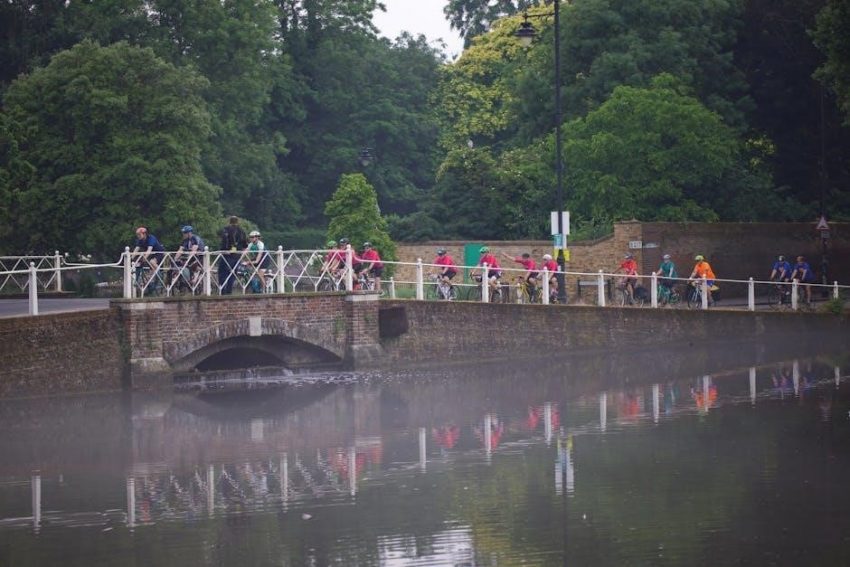A sponsorship letter for a sports team is a formal request seeking financial or material support, outlining the benefits for the sponsor and the team’s goals;
1.1 What is a Sponsorship Letter?
A sponsorship letter is a formal request sent by a sports team or organization to seek financial or material support from individuals or corporations. It outlines the purpose of the request, the benefits for the sponsor, and how the partnership will be mutually advantageous; This document is typically addressed to potential sponsors, such as local businesses, corporations, or community leaders. The letter highlights the team’s goals, achievements, and the value the sponsor will receive, such as brand exposure, community engagement, or exclusive event access. It is a professional and persuasive tool designed to secure support and build long-term partnerships.
1.2 Importance of Sponsorship Letters for Sports Teams
Sponsorship letters are vital for sports teams to secure funding, resources, and support from businesses or individuals. They provide a professional platform to communicate the team’s goals, achievements, and vision, helping to build credibility. These letters highlight the mutual benefits of the partnership, such as brand exposure for sponsors and financial backing for the team. They also foster long-term relationships, enabling teams to sustain operations and grow. Without sponsorship letters, teams may struggle to access the resources needed to compete, train, and achieve their objectives, making them a cornerstone of sports team fundraising efforts.
1.3 Purpose of a Sponsorship Letter

A sponsorship letter serves as a formal request for financial or material support from potential sponsors. Its primary purpose is to introduce the sports team, outline their goals, and explain how sponsorship will benefit both parties. The letter aims to persuade sponsors by highlighting the team’s achievements, community impact, and alignment with the sponsor’s values. It also proposes specific sponsorship opportunities, such as logo placement, event participation, or social media promotion. Ultimately, the letter seeks to establish a mutually beneficial partnership, ensuring the team’s success while providing the sponsor with brand visibility and positive community engagement.
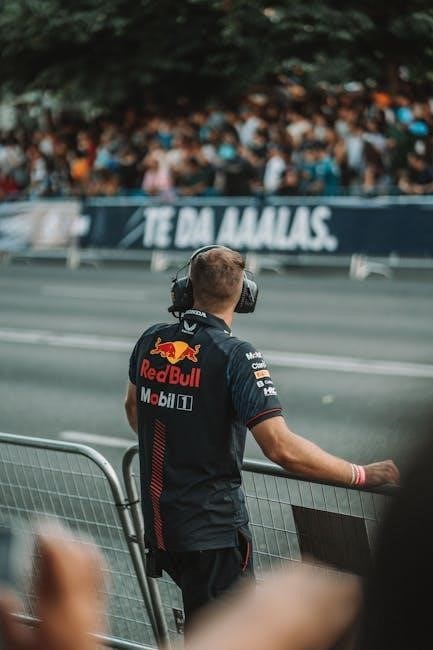
Understanding the Structure of a Sponsorship Letter
A sponsorship letter follows a clear, professional format, typically starting with an introduction, followed by the request, benefits for the sponsor, and a polite conclusion.
2.1 Key Components of a Sponsorship Letter
A sponsorship letter for a sports team typically includes several key components: a header with the team’s logo and contact information, a greeting addressing the potential sponsor, and an introduction of the team. The body outlines the sponsorship request, including the event or initiative requiring funding, and highlights the benefits for the sponsor, such as brand exposure, advertising opportunities, and community engagement. The letter should also include a call to action, specifying how the sponsor can respond, and conclude with a polite thank-you and contact details for further discussion. These elements ensure clarity, professionalism, and effectiveness in securing support.
2.2 How to Structure Your Letter
To structure a sponsorship letter effectively, begin with your team’s contact information, followed by the date and the sponsor’s details. Use a formal greeting and clearly state the purpose of the letter in the introduction. In the body, explain your team’s mission, the event or initiative requiring sponsorship, and how it aligns with the sponsor’s values. Highlight the benefits the sponsor will receive, such as branding opportunities or community engagement. Conclude with a polite request for support and a call to action, such as a deadline for response. End with a thank-you and your contact information for follow-up.
2.3 Essential Elements to Include
A sponsorship letter for a sports team should include several key elements to ensure clarity and effectiveness. Start with a clear introduction of your team, including its mission and values. Outline the specific purpose of the sponsorship request, such as funding for equipment, travel, or events. Highlight the benefits the sponsor will receive, like brand visibility, marketing opportunities, or community engagement. Include specific sponsorship levels or packages, detailing what sponsors can expect in return for their support. Finally, provide a call to action, such as a deadline for response, and include your contact information for follow-up.

How to Write an Effective Sponsorship Letter
Craft a compelling sponsorship letter by clearly stating your request, highlighting benefits for the sponsor, and showcasing your team’s value. Keep it concise, professional, and tailored.
3.1 Tips for Writing a Persuasive Letter
Start by understanding the sponsor’s objectives and tailor your letter to align with their goals. Be clear about your request and the benefits they’ll receive. Highlight your team’s achievements and community impact to demonstrate value. Use a professional yet engaging tone to build rapport. Include specific details, such as how their sponsorship will be used and recognized. Keep the letter concise, focusing on key points to maintain their interest. End with a strong closing statement and a call to action. Proofread for errors and personalize each letter to show genuine appreciation for their potential support. This approach ensures a compelling and effective appeal.
3.2 How to Make Your Request Stand Out
Personalize your letter by addressing the sponsor directly and referencing their values or past support for similar causes. Highlight what makes your team unique, such as recent achievements or community involvement. Use compelling storytelling to connect emotionally, showcasing how their sponsorship will directly impact your team’s success. Include visuals like team photos or logos to make the request more engaging. Clearly outline sponsorship tiers or specific requests, offering tailored benefits for their contribution. End with a strong call to action, emphasizing urgency, like a deadline for commitment. This approach ensures your request is memorable and aligns with the sponsor’s interests and goals.
3.3 The Importance of Being Concise
Being concise is crucial in a sponsorship letter, as it ensures your message is clear and impactful. Sponsors often review multiple requests, so brevity helps your letter stand out. Focus on the most relevant details, such as your team’s goals, achievements, and how sponsorship will benefit both parties. Avoid unnecessary jargon or lengthy narratives. Keep paragraphs short and use bullet points if needed to enhance readability. A concise letter demonstrates professionalism and respect for the sponsor’s time, increasing the likelihood of a positive response. Aim for clarity and precision to make your request compelling and easy to understand.
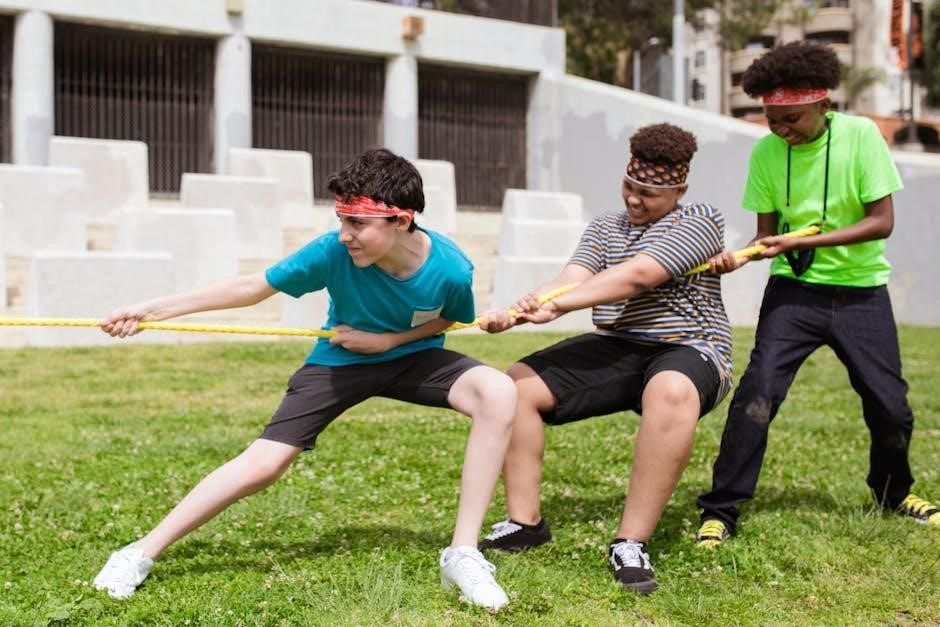
Sponsorship Letter Templates and Examples
Using sponsorship letter templates ensures a professional and structured approach. Various examples are available online, providing a clear framework to present your sports team’s sponsorship request effectively.
4.1 Sample Sponsorship Letters for Sports Teams
Sample sponsorship letters for sports teams provide valuable guidance for crafting effective requests. These examples, often available in PDF formats, showcase how to articulate your team’s goals, outline sponsorship tiers, and highlight benefits for sponsors. They include sections for team introductions, sponsorship levels, and proposed collaborations. Many templates cater to various sports, ensuring relevance for different audiences. By reviewing these samples, you can learn how to tailor your letter to specific sponsors, emphasizing mutual benefits. Personalization and professionalism are key, making your request stand out and fostering long-term partnerships. Always include a call-to-action and express gratitude for the sponsor’s consideration.

4.2 How to Use Templates Effectively
Using sponsorship letter templates effectively involves tailoring them to your team’s specific needs. Start by selecting a template that aligns with your sport and sponsorship goals. Replace placeholders with your team’s name, achievements, and unique story. Clearly outline the sponsorship levels and benefits, ensuring the value proposition is compelling. Customize the tone to match your team’s brand and the sponsor’s interests. Avoid generic language and make the letter personalized. Proofread for clarity and professionalism. Finally, include your contact information and a call-to-action to encourage a response. Templates are tools to streamline the process, not restrict creativity, so adapt them to best represent your team.
4.3 Customizing Your Letter for Different Sponsors
Customizing your sponsorship letter for different sponsors ensures it resonates with their specific interests and goals. Research the sponsor’s values, mission, and past sponsorships to align your request. Highlight how your team’s objectives mirror theirs, creating a mutually beneficial partnership. Mention specific events, initiatives, or exposure opportunities that align with their brand. Tailor the sponsorship packages to offer varying levels of involvement, such as logo placement, event naming rights, or exclusive content access. Personalize the greeting and include references to their past support if applicable. Showcasing your team’s unique story and achievements will help differentiate your request and make it more compelling.
Identifying Potential Sponsors
Target local businesses, brands aligning with your team’s values, and companies with a history of sports sponsorship. Consider industries like sports equipment, health, and lifestyle brands.
5.1 Who to Approach for Sponsorship
Identify potential sponsors by targeting local businesses, sports equipment brands, and companies with a history of supporting community initiatives. Consider industries like health, fitness, and lifestyle, as they often align with sports values. Approach businesses whose target audience matches your team’s demographics. Small businesses, especially those owned by sports enthusiasts, may also be receptive. Additionally, reach out to larger corporations with established sponsorship programs. Ensure the companies you approach share your team’s mission and values, increasing the likelihood of a mutually beneficial partnership. Research sponsors who have supported similar teams or events to tailor your approach effectively.
5.2 How to Research Potential Sponsors
Research potential sponsors by identifying companies whose values align with your team’s mission. Review their websites, social media, and news articles to understand their sponsorship history and preferences. Analyze their target audience to ensure it matches your team’s demographics. Consider their financial health by reviewing annual reports or financial news. Use online databases or directories to filter companies by industry, size, and sponsorship history. Attend local business events or networking sessions to connect with decision-makers. Additionally, leverage your team’s network, such as parents, coaches, or alumni, for introductions to potential sponsors. This ensures a tailored and targeted approach.
5.3 Criteria for Selecting the Right Sponsors
When selecting sponsors, prioritize alignment with your team’s values and goals. Choose companies that have a history of supporting sports or youth development. Assess their financial stability to ensure they can meet sponsorship commitments. Consider their target audience and brand reputation to ensure mutual benefit. Evaluate the potential for long-term partnerships rather than one-time contributions. Additionally, review their expectations for visibility and engagement to ensure they align with your team’s capacity. Lastly, seek sponsors who are passionate about your sport or community, as this fosters a more meaningful and sustainable relationship.
The Role of the Sports Team in Sponsorship
The sports team plays a crucial role in sponsorship by presenting themselves as attractive partners, ensuring professionalism, clear communication, and demonstrating the benefits of collaboration.
6.1 Building a Strong Case for Sponsorship
Building a strong case for sponsorship involves clearly demonstrating the value your sports team offers to potential sponsors. Highlight your team’s achievements, community impact, and alignment with the sponsor’s brand values. Showcase specific data, such as audience reach, engagement metrics, and past success stories, to illustrate the benefits of partnership. Emphasize how sponsorship will enhance the sponsor’s visibility, reputation, and customer loyalty. Tailor your message to resonate with the sponsor’s goals, ensuring your proposal is compelling, professional, and well-supported by evidence. A strong case not only attracts sponsors but also fosters long-term partnerships.
6.2 Demonstrating the Value of Your Team
Demonstrating the value of your team is crucial for attracting sponsors. Highlight your team’s unique strengths, such as its competitive performance, community engagement, or inspirational story. Quantify your reach by including metrics like social media followers, event attendance, or media coverage. Showcase how your team aligns with the sponsor’s target audience and brand values. Emphasize the exposure and recognition sponsors will receive, such as logo placement on uniforms, promotional materials, or event announcements. Use specific examples of past successes to illustrate how sponsorship can drive brand awareness and customer loyalty for the sponsor.
6.3 Showcasing Your Team’s Achievements
Showcasing your team’s achievements is essential to attract sponsors. Highlight specific accomplishments, such as championships, records, or notable performances. Use bullet points or short paragraphs to present these achievements clearly. Include statistics, awards, or recognition received by the team or individual players. Mention any media coverage or community impact to demonstrate your team’s influence. Sharing testimonials from coaches, players, or fans can also add credibility. Emphasize how these achievements align with the sponsor’s values and goals. By showcasing success, you create a compelling case for why sponsoring your team is a worthwhile investment. Keep the focus on measurable outcomes and team pride.
Benefits for Sponsors
Sponsors gain brand exposure, increased visibility, and community engagement through sports team sponsorships, enhancing their reputation and reaching target audiences effectively.
7.1 What Sponsors Expect in Return
Sponsors expect increased brand visibility, credibility, and customer loyalty through association with the sports team. They seek logo placement on uniforms, banners, and promotional materials, as well as social media mentions. Sponsors also anticipate exclusive rights in their industry category and regular updates on sponsorship impact. Many look for brand alignment with the team’s values and community engagement opportunities; Additionally, sponsors may expect access to exclusive events or hospitality experiences. Ensuring these expectations are met helps build long-term partnerships and mutual benefit, making the sponsorship a valuable investment for both parties.
7.2 Brand Exposure and Visibility
Brand exposure and visibility are crucial benefits for sponsors, offering increased recognition and reach. Through a sports team sponsorship, brands gain prominence on jerseys, banners, and promotional materials. This visibility extends to live events, TV broadcasts, and online platforms, enhancing their audience reach. Sponsors also benefit from social media mentions, creating a digital footprint that boosts engagement. The team’s merchandise further amplifies brand presence, ensuring consistent visibility. Metrics like impressions and viewership help quantify this exposure, demonstrating its value. By aligning with a sports team, sponsors can effectively enhance their brand’s recognition and appeal, driving potential customer growth and loyalty.
7.3 Building Community Relationships
Sponsorship provides an opportunity for brands to strengthen their connection with the local community. By supporting a sports team, sponsors demonstrate their commitment to local causes, fostering goodwill and trust. Community members often show loyalty to sponsors who contribute to their team’s success. This mutual relationship enhances the sponsor’s reputation and creates a positive image. Engaging with the community through events, fundraisers, and outreach programs further solidifies this bond. Sponsors can highlight their involvement in promotional materials, reinforcing their role as community supporters. This alignment not only benefits the team but also strengthens the sponsor’s ties to the local audience.
Best Practices for Sponsorship Letters
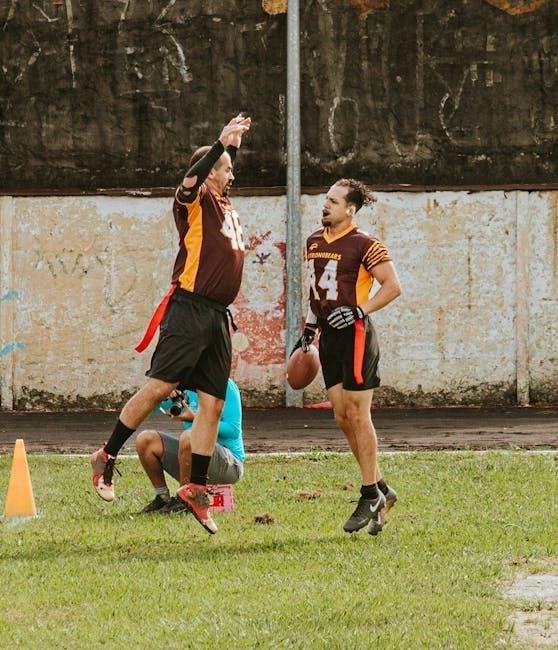
Research the sponsor’s interests, personalize the letter, ensure professionalism, and follow up after submission. These practices enhance credibility and improve chances of securing sponsorship successfully.
8.1 Researching the Sponsor’s Interests
Researching the sponsor’s interests is crucial for crafting a compelling sponsorship letter. Understanding their values, target audience, and previous sponsorships helps align your proposal with their goals. Review their website, social media, and past partnerships to identify shared interests. Tailor your letter to highlight how your sports team can help achieve their objectives, such as brand visibility or community engagement. Demonstrating awareness of their priorities shows professionalism and increases the likelihood of a positive response. This step ensures your request is relevant and meaningful to the sponsor, making it more likely to secure their support.
8.2 Personalizing Your Letter
Personalizing your sponsorship letter significantly increases its impact. Address the sponsor by name and tailor the content to align with their interests and goals. Reference their values, past sponsorships, or community involvement to show you’ve done your homework. Highlight specific benefits they’ll receive, such as brand exposure through your team’s events or social media. Avoid generic requests and instead create a connection by emphasizing how their support will directly contribute to your team’s success. This approach makes the letter feel thoughtful and targeted, increasing the likelihood of a positive response. Personalization demonstrates respect and shows you value their potential partnership.
8.3 Ensuring Professionalism
Ensuring professionalism in your sponsorship letter is crucial for making a positive impression. Start with a well-structured format, including your team’s letterhead, date, and contact information. Use a polite and formal tone throughout the letter, avoiding slang or casual language. Proofread for spelling and grammar errors to maintain credibility. Address the sponsor respectfully and clearly state your request. Include a clear call to action, such as requesting a meeting or providing deadlines. Professionalism reflects your team’s image and increases the likelihood of a positive response. A polished letter demonstrates your commitment to the partnership and respect for the sponsor’s time and resources.
8.4 Following Up After Submission
Following up after submitting your sponsorship letter is essential to show enthusiasm and professionalism. Wait 7-10 business days before reaching out to avoid appearing pushy. Send a polite email or make a phone call to inquire about the status of your request. Reiterate your appreciation for their time and consideration. This follow-up demonstrates your commitment to the potential partnership and keeps your proposal fresh in their mind. Be prepared to provide additional information or answer questions if needed. A courteous and timely follow-up can significantly increase the chances of a positive response and help build a stronger relationship with the sponsor.
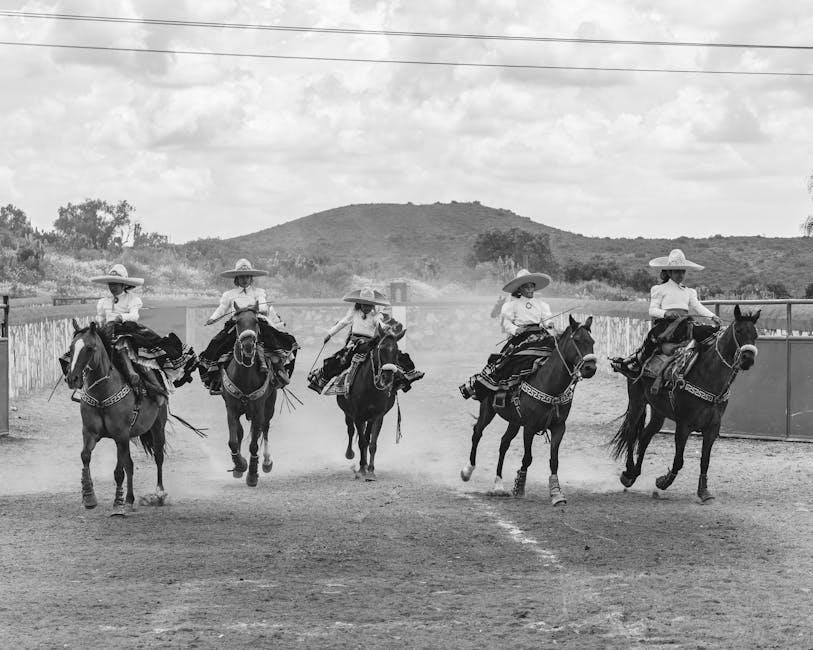
Common Mistakes to Avoid
Avoid using generic templates without personalization and ensure your letter clearly states the request. Don’t overlook highlighting the benefits for the sponsor, and avoid unclear or vague language. Poor formatting, lack of professionalism, and not proofreading are common errors that can harm your chances of securing sponsorship. Always tailor your letter to the specific sponsor and maintain a polite, respectful tone throughout.
9.1 Overlooking the Sponsor’s Needs
One of the most common mistakes in sponsorship letters is failing to consider the sponsor’s needs and interests. Sponsors want to see how their investment will benefit them, not just how it helps your team. Avoid generic requests and instead tailor your letter to align with the sponsor’s goals, such as brand exposure or community engagement. Research the sponsor’s values, target audience, and past sponsorships to create a proposal that demonstrates mutual benefit. Highlighting how your team can help the sponsor achieve their objectives will make your request more compelling and increase the likelihood of a positive response.
9.2 Being Too Vague About the Request
Another common mistake is being overly vague in your sponsorship request. Sponsors need clarity to understand how their support will be utilized. Avoid general statements like “any contribution would be appreciated” without specifying the amount or purpose. Clearly outline what you’re asking for, whether it’s funding for equipment, travel, or event organization. Be direct about how the sponsorship will benefit the sponsor, such as through branding opportunities or community visibility. Providing specific details demonstrates professionalism and helps sponsors make informed decisions. A well-defined request shows respect for their time and resources, making your proposal more appealing and actionable.
9.3 Poor Grammar and Spelling
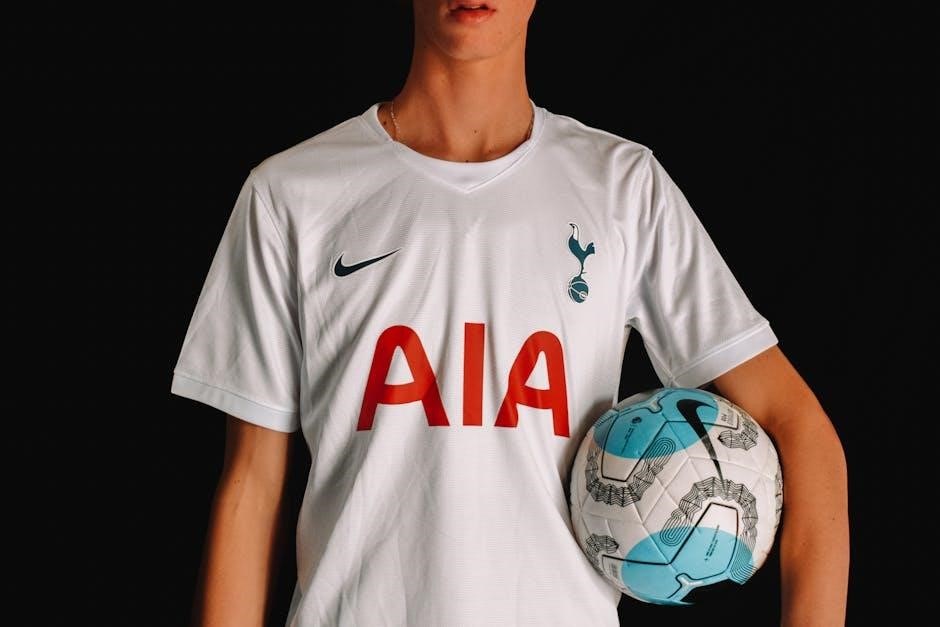
Poor grammar and spelling are critical mistakes that can undermine the professionalism of your sponsorship letter. Sponsors may question your team’s credibility if the letter is riddled with errors. Always proofread your letter multiple times and consider having others review it as well. Typos and grammatical errors can make your request appear careless or unprofessional. Use tools like spell check or grammar software to identify mistakes. Additionally, ensure consistency in formatting, such as dates, names, and terminology. A polished, error-free letter reflects attention to detail and enhances your team’s image, making your request more compelling and respectful of the sponsor’s time.
A well-crafted sponsorship letter is essential for securing support. It highlights your team’s value, aligns with sponsors’ goals, and fosters mutually beneficial partnerships. Craft yours carefully for success.

10.1 Recap of Key Points
Crafting a sponsorship letter for your sports team requires clarity, professionalism, and a focus on mutual benefits. Begin by understanding the structure, ensuring your letter includes key components like an introduction, purpose, and call to action. Personalize each letter to align with the sponsor’s interests and values, demonstrating how their support will benefit both your team and their brand. Be concise, avoid vague requests, and highlight your team’s achievements to build credibility. Follow up politely after submission to show appreciation and maintain relationships. By avoiding common mistakes and tailoring your approach, you can create compelling letters that attract sponsors and foster long-term partnerships.
10.2 Final Tips for Success
To ensure your sponsorship letter achieves its goal, maintain a professional tone and proofread for errors. Clearly outline the benefits for the sponsor, such as brand exposure or community engagement. Highlight your team’s achievements to demonstrate value and credibility. Personalize each letter to reflect the sponsor’s interests and align your request with their goals. Include a strong call to action and provide multiple ways to respond. Follow up politely after submission to express gratitude and keep the door open for future opportunities. A well-crafted, tailored letter will significantly increase your chances of securing sponsorship and building lasting partnerships with sponsors.
Additional Resources
Explore official sports websites, online marketplaces, and educational platforms for sponsorship letter templates and resources tailored to help sports teams secure sponsorships effectively and achieve success.
11.1 Where to Find More Templates and Examples
Discover a variety of sponsorship letter templates and examples specifically designed for sports teams by searching online for “sponsorship letter for sports team PDF.” Websites like Google Drive, Template.net, and Microsoft Office Templates offer downloadable resources. Additionally, platforms such as HubSpot and PandaDoc provide customizable templates tailored to sports sponsorship needs. Many sports organizations and leagues also share sample sponsorship letters on their official websites. These resources can serve as a great starting point for crafting a professional and effective sponsorship request letter for your sports team.
11.2 Further Reading on Sponsorship Strategies
For deeper insights into crafting effective sponsorship strategies, explore books like Sports Marketing and Sponsorship by Stotlar and Higgs. Websites such as Sports Business Journal and ESPN offer articles on modern sponsorship trends. Additionally, blogs from sports marketing agencies provide practical tips for securing sponsors. LinkedIn articles by industry professionals share real-world examples and best practices. Online courses on platforms like Coursera and Udemy also cover sponsorship strategies in detail. These resources complement your sponsorship letter efforts by helping you understand the broader context of sponsorship and how to build long-term partnerships with sponsors.

